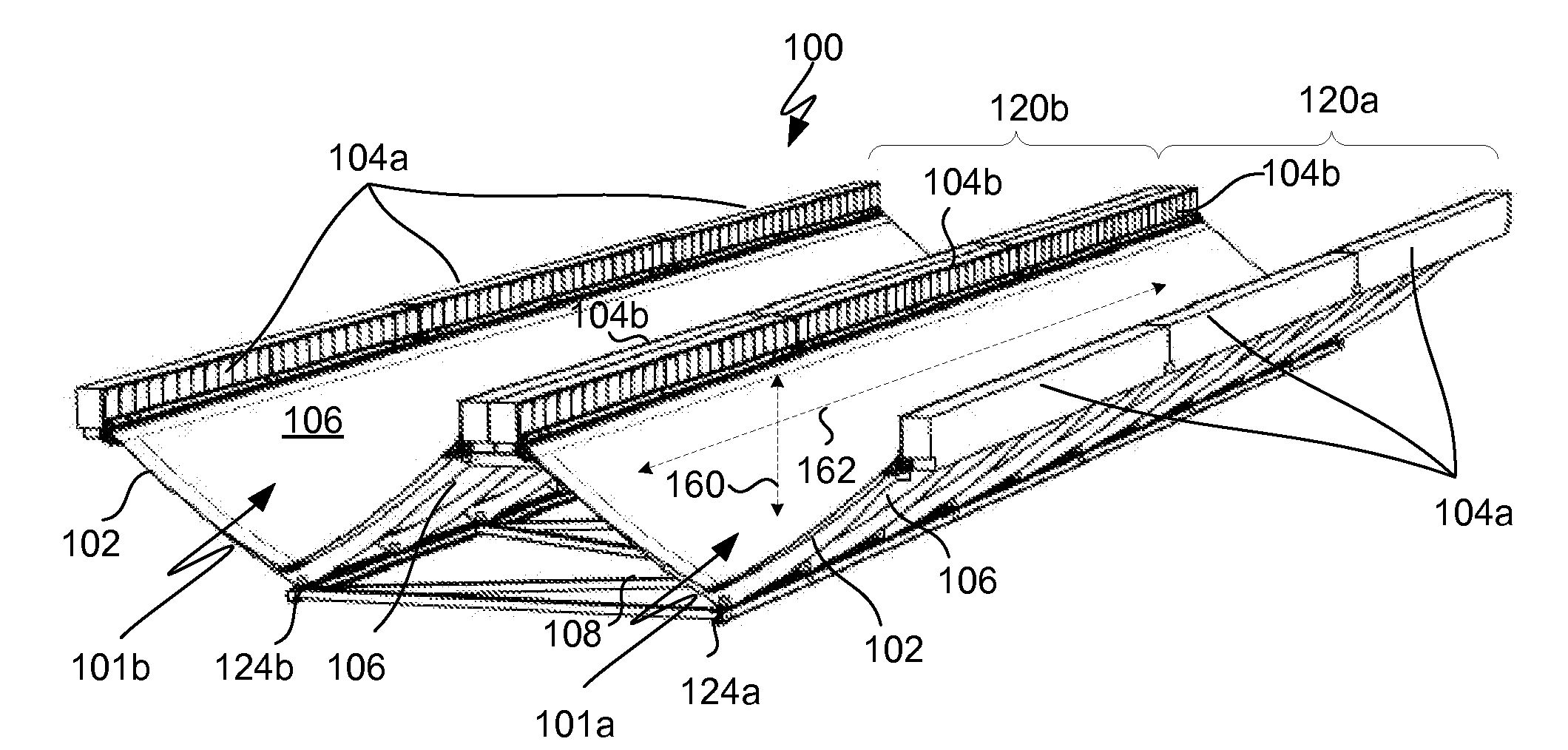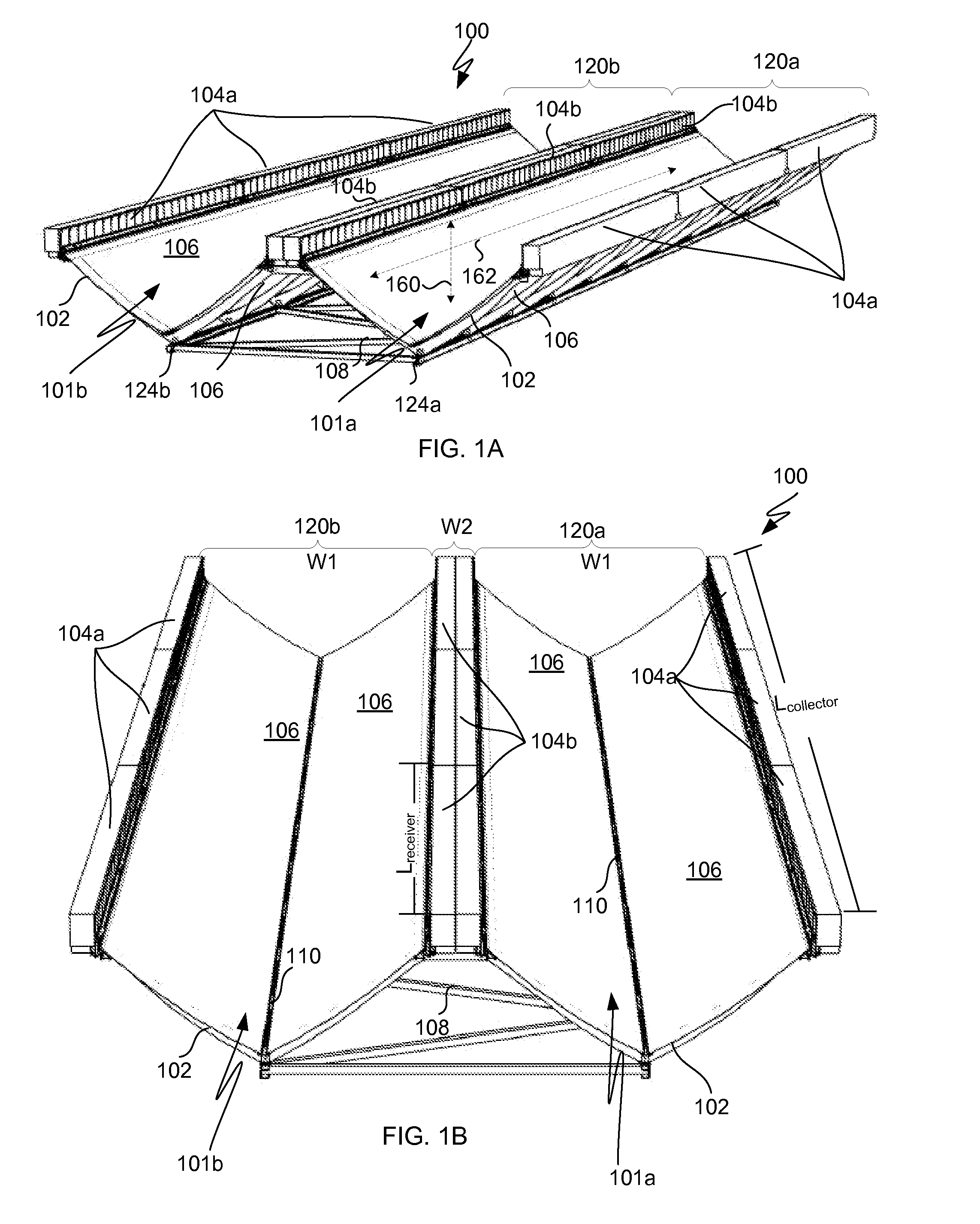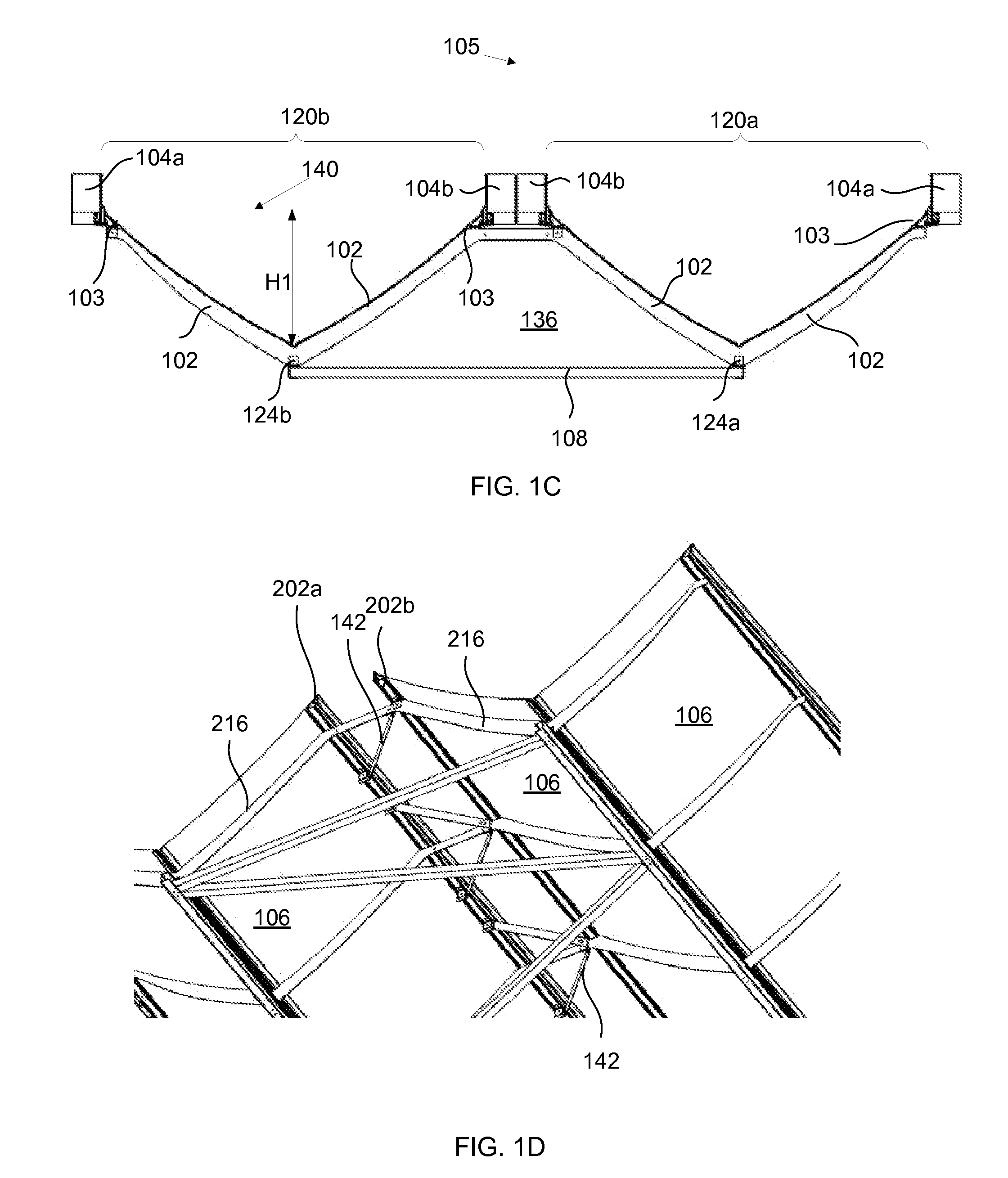Solar collector framework
a solar collector and framework technology, applied in the direction of heat collector mounting/support, pv power plants, lighting and heating apparatus, etc., can solve the problems of increasing cost and system complexity, not one has achieved significant commercial success, and limited to utilizing less than all of the total available ligh
- Summary
- Abstract
- Description
- Claims
- Application Information
AI Technical Summary
Problems solved by technology
Method used
Image
Examples
example
[0096]The following example is for exemplary purposes only and is not intended to be limiting as any number of solar cells may be used, the length of the solar energy collector may vary, and other embodiments may be possible.
[0097]Referring back to FIG. 1A, the solar collector may have a length Lcollector of about 5.7 m to allow for at least three solar receivers 104 to be positioned on the top sides 202, 204 (FIG. 2A) of the support structure 102. The solar receiver as discussed above with reference FIG. 4D may be used, which would allow for a total of twelve solar receivers. Each solar receiver 104 may have about twenty four solar cells electrically connected in series. Since each solar cell may generate about ½ volt, each solar receiver 104 may generate about 12 volts. Each receiver contains twenty-four solar cells so the total number of cells in the collector 100 is 288.
[0098]The total optical aperture of the collector is the width of each trough (W1) multiplied by the trough le...
PUM
 Login to View More
Login to View More Abstract
Description
Claims
Application Information
 Login to View More
Login to View More - R&D
- Intellectual Property
- Life Sciences
- Materials
- Tech Scout
- Unparalleled Data Quality
- Higher Quality Content
- 60% Fewer Hallucinations
Browse by: Latest US Patents, China's latest patents, Technical Efficacy Thesaurus, Application Domain, Technology Topic, Popular Technical Reports.
© 2025 PatSnap. All rights reserved.Legal|Privacy policy|Modern Slavery Act Transparency Statement|Sitemap|About US| Contact US: help@patsnap.com



